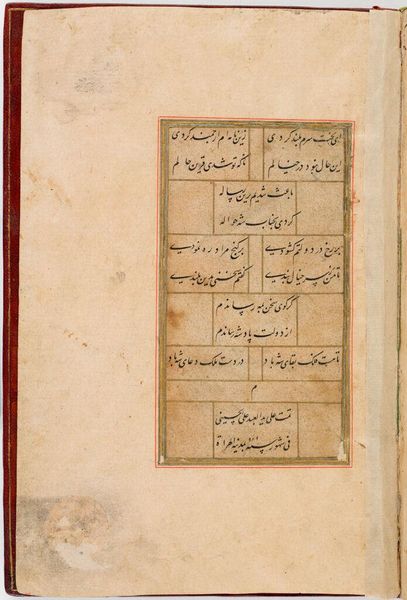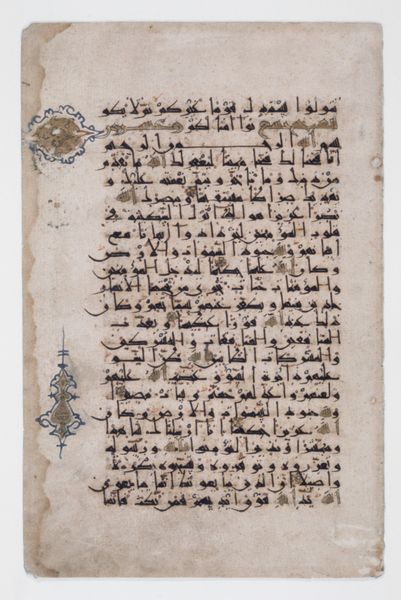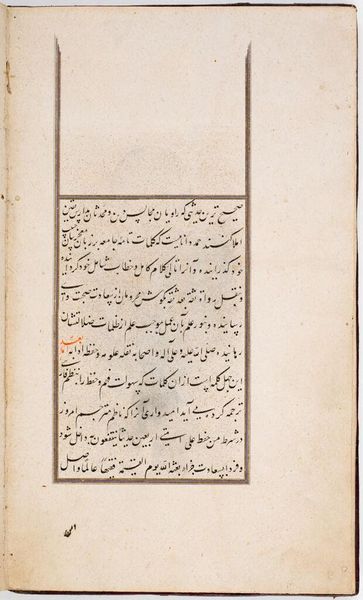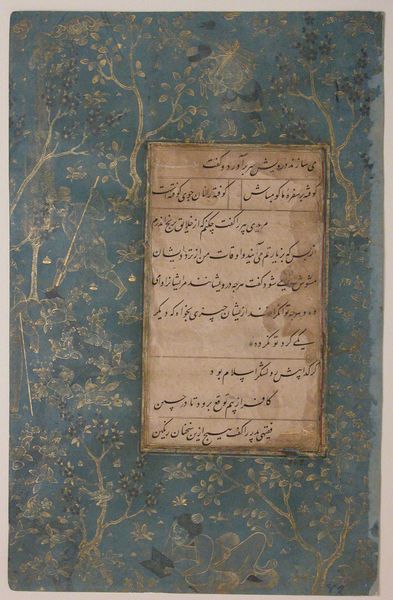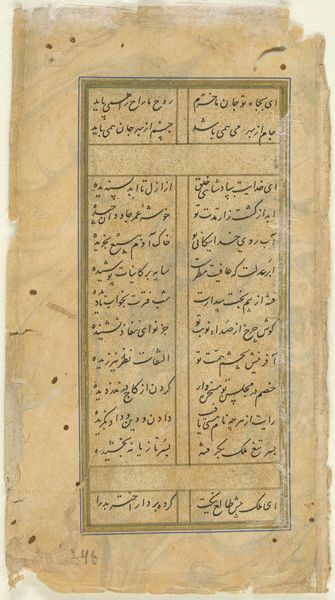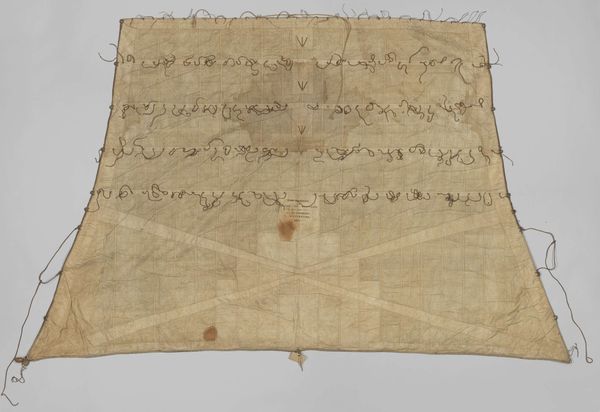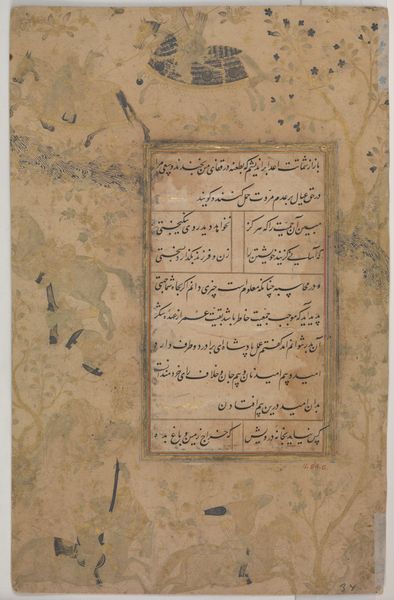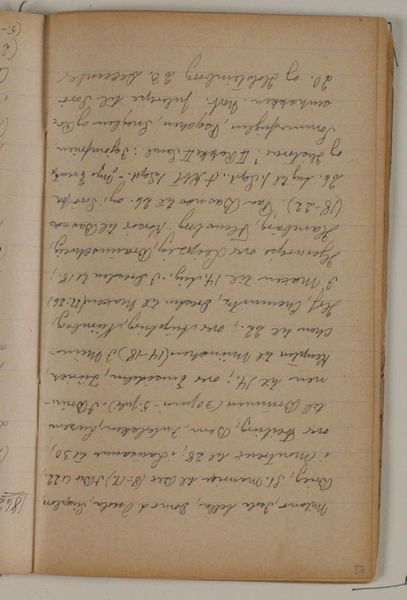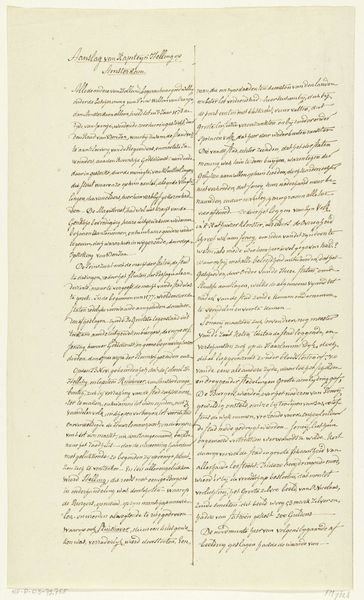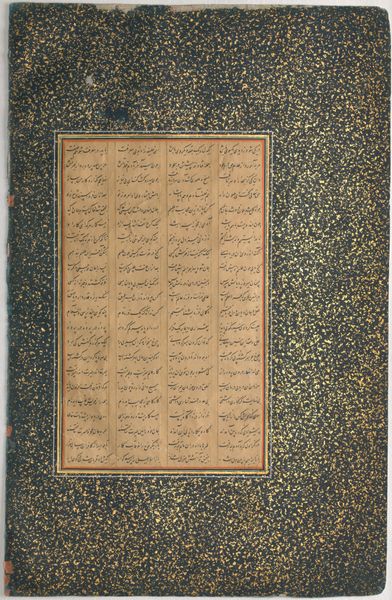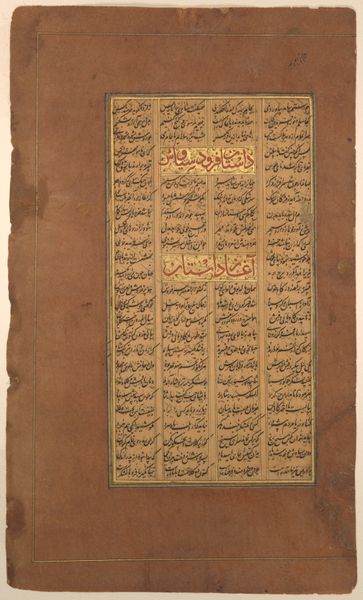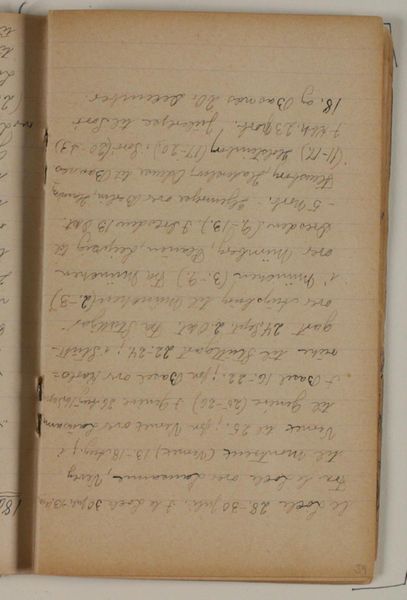
Page of Calligraphy from the Shahnama (Book of Kings) of Shah Tahmasp 16th century
0:00
0:00
drawing, paper, ink
#
drawing
#
paper
#
ink
#
islamic-art
#
calligraphy
Dimensions: H. 8 1/2 in. (21.6 cm) W. 11 9/16 in. (29.4 cm)
Copyright: Public Domain
Curator: Let's examine this Page of Calligraphy from the Shahnama, or Book of Kings, of Shah Tahmasp, a remarkable work from the 16th century. The page utilizes ink and drawing on paper and now resides at The Metropolitan Museum of Art. Editor: Immediately, I am struck by the elegance of the script. The paper feels ancient and textural even from afar; one can imagine it whispering tales of kings. It projects a contemplative aura. Curator: Indeed. And the context deepens that feeling. The Shahnama is Iran’s national epic, so these pages were imbued with notions of Persian identity, sovereignty, and cultural memory. Examining it now invites discourse with issues of cultural heritage, diasporic identities, and even postcolonial studies. How are those heroic narratives repurposed in contemporary Iranian identities? Editor: Right. I also see how this page operates on a symbolic level. Calligraphy is elevated in Islamic art, transcending mere writing to become a potent emblem of divine knowledge, cosmic order, and transcendent beauty. This script style echoes across centuries and connects individuals through the visual memory of faith and tradition. Curator: Exactly. We also can’t forget Shah Tahmasp's socio-political motivations when commissioning this work. How did the creation of a lavishly illustrated Shahnama cement his legitimacy as a ruler during a period of upheaval and transition? Who had access to view these artworks, and how does that inform our understanding of social class, access to education, and courtly dynamics? Editor: Furthermore, note the subtle geometric principles, in this script, with curves flowing organically. Perhaps the page suggests more than just literature; it indicates cycles of human experience through carefully curated form and structure, referencing ancient systems of cosmological understanding. The piece conveys the continuous ebb and flow between the earthly and divine. Curator: Seeing the artwork from these different perspectives enriches our understanding and complicates the meaning. We move beyond the simple presentation of calligraphy to engage with ideas of power, identity, memory, and spiritual meaning in new ways. Editor: Absolutely; the way symbolism operates both collectively and within the intimate, solitary space of the viewer… It’s a compelling reminder that ancient art is, ultimately, about continuous conversation across generations.
Comments
No comments
Be the first to comment and join the conversation on the ultimate creative platform.
